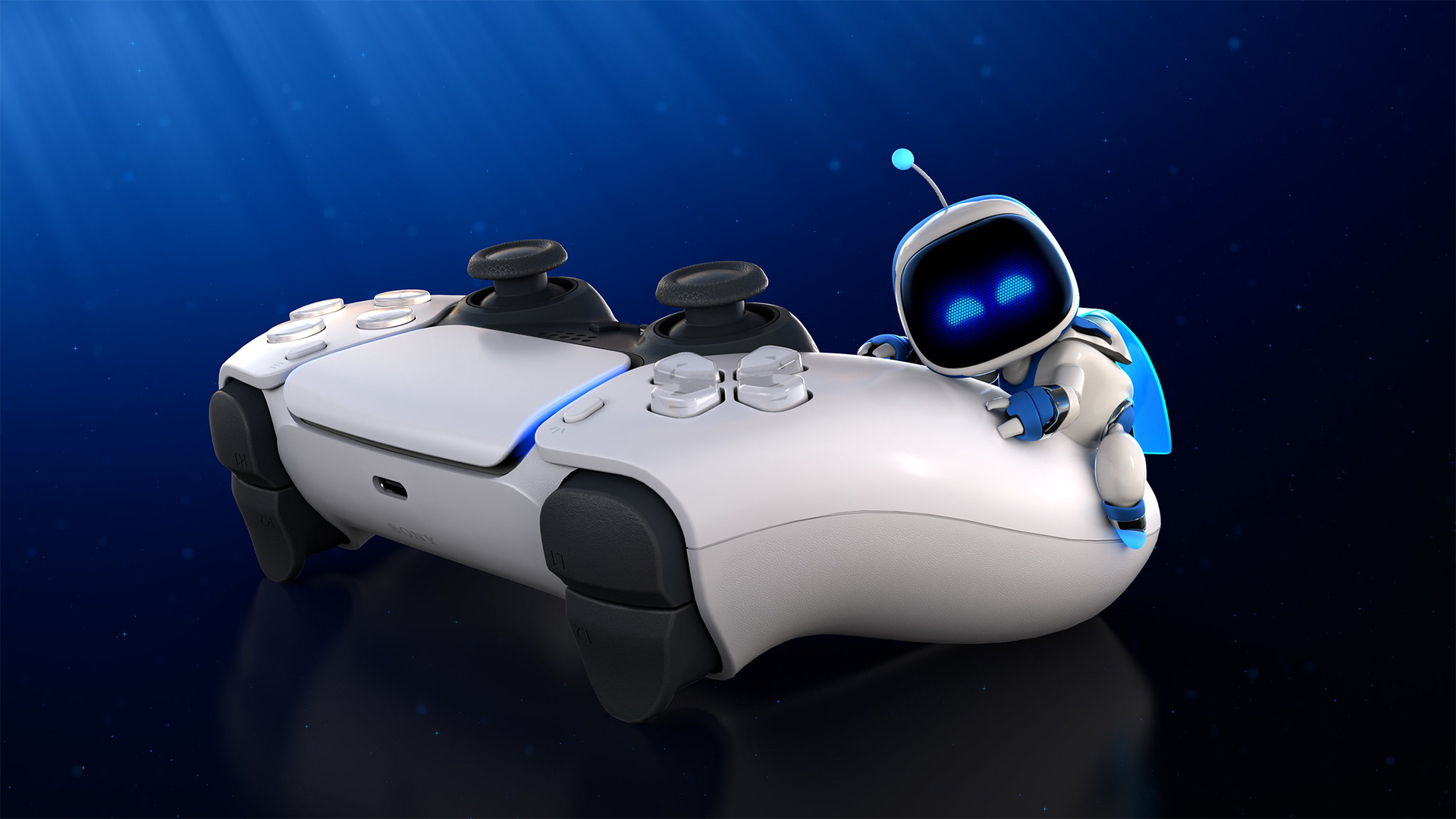
DualSense has defined the first year of PS5. Of all of the innovations that Sony was striving to introduce with its new generation console – 3D Audio, the ultra-high speed SSD, and everything in between – it was the overhauled controller that presented the greatest question mark. How would such a drastic redesign of the DualShock 4 be perceived by players, given how little PlayStation controllers have changed over the last two decades, and could something as simple sounding as improved rumble functionality really heighten our sense of immersion in virtual worlds?
The truth is, we had no idea what was coming. "How good any game interaction feels relates directly to how well the game can deliver good feedback," says Insomniac Games' Mike Daly, game director of Ratchet & Clank Rift Apart. "Each generation has brought significant advances for graphical and audio feedback, but in the past the fidelity of rumble was far too low to reinforce it. Moving from simple rotary rumble to the DualSense is far more than a general leap – it crosses a transformational threshold that allows it to provide a very rich feedback experience. Finally engaging your sense of touch alongside sight and sound can dramatically increase the quality of immersion."
Reach into virtual worlds
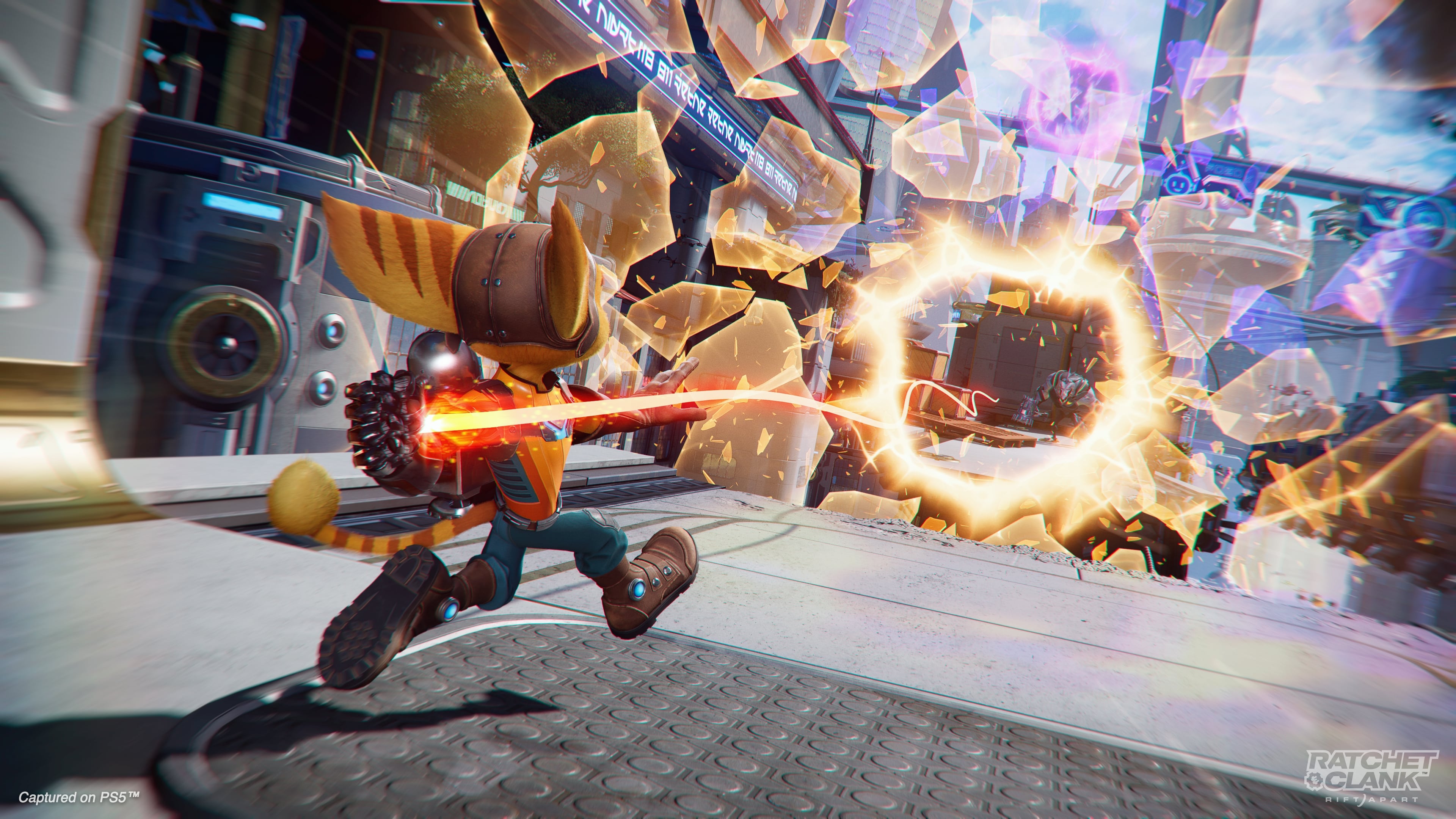
Descriptions of the DualSense sound hyperbolic until you're able to experience it for yourself. It's been a year since the launch of the PS5 and I still find myself slipping – wondering whether what I'm being told by developers reflects reality. That haptic feedback, enabled by replacing traditional rumble motors with dual actuators in the chassis of the controller, could indeed generate physically responsive feedback to in-game action. Or that the adaptive triggers would actually be able to replicate varying levels of force and tension, letting us feel a gun jam or a tightening bowstring between our fingertips.
For many early PS5 adopters, it's Astro's Playroom that proved it was all possible. We have spoken to countless developers throughout the year and most will point to Team Asobi's wonderful PS5 platformer as the best DualSense showcase. Codemasters' development director Robert Karp told our friends at Play magazine that "it opened up our minds to a whole new level of what's possible", while Bugsnax creative director Kevin Zuhn joked to that Sony's "five-hour massage" was the "best way to see what DualSense is" able to achieve.
Given the response, Nicolas Doucet, creative director of Astro's Playroom and studio director at Team Asobi, is in perhaps the best position to weigh the impact of the DualSense controller. He tells me: "On an innovation level, it's not often you get new controller features that add a new dimension to your play experience – something that can heighten your senses."
"If we look back at controller innovations, we could name analogue sticks, rumble or motion detectors. All of which were noticeable game-changers, but it had been some time since such a fundamental innovation had occurred in traditional controllers. DualSense opens new doors for game creators to imagine how experiences feel – the feeling of rain drops falling on your character is a striking example," says Doucet, adding, "that novelty is exciting when starting a new generation."
More than a novelty
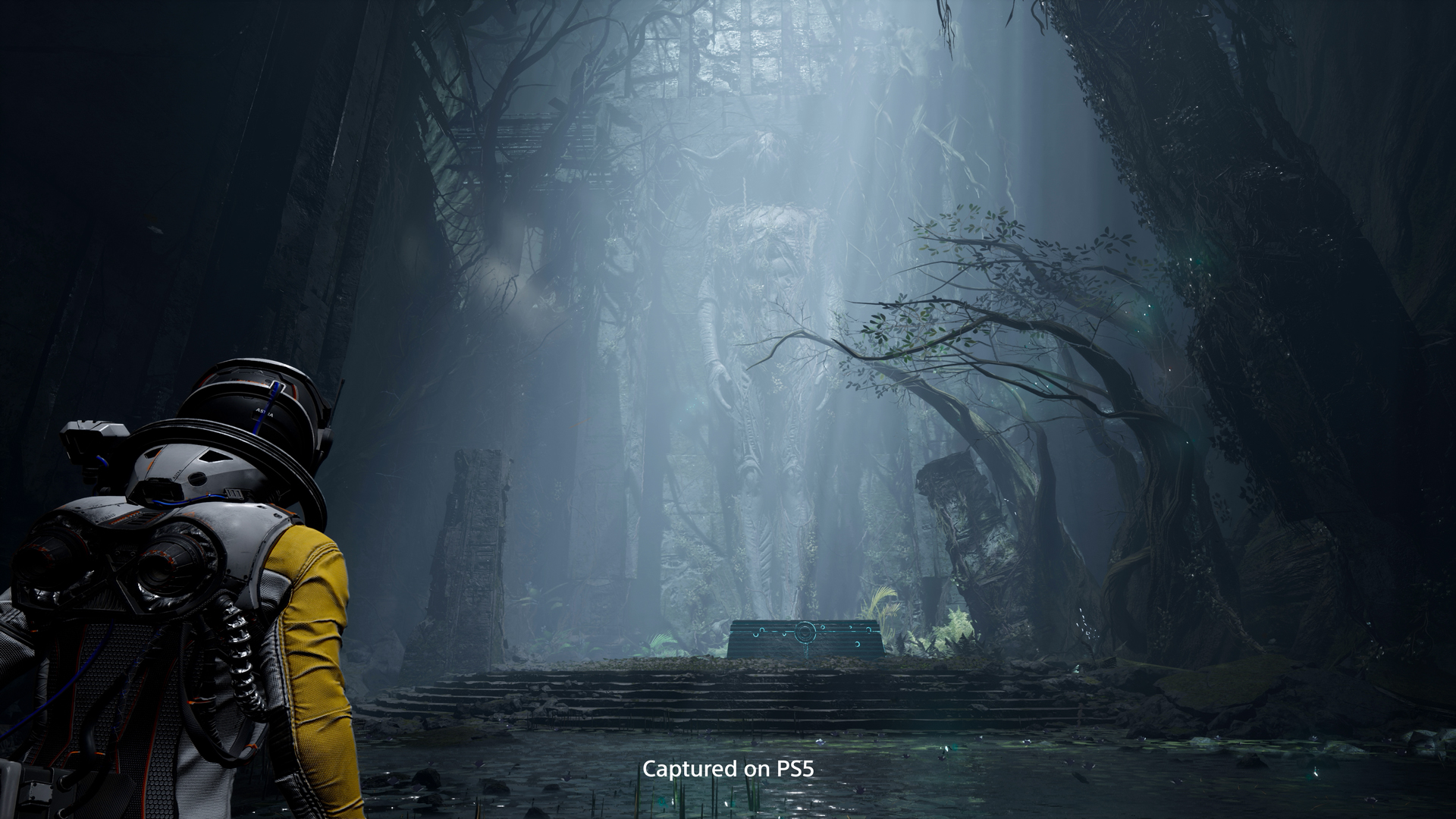
What's remarkable is that, a year on from the launch of PS5, the novelty of the adaptive triggers and haptic feedback is yet to wear thin. Whether it's Returnal simulating the feeling of environmental effects like rain and hail in the palm of your hands, Control making each of Jesse Faden's service weapon forms feel physically distinct, or Ratchet & Clank: Rift Apart finding a genuinely new way to manage primary and secondary fire functions, the boundaries of what is possible are yet to be discovered.
Sign up to the GamesRadar+ Newsletter
Weekly digests, tales from the communities you love, and more
It's rare to see such creative implementation of new technology so early on in a generation cycle. Launch games will typically work to highlight key innovations of a new system and then, gradually, support will subside over time. Speaking with Toshi Aoki, product director at Sony Interactive Entertainment, I'm told that the first wave of innovative implementation has been possible because creatives were invited to play with the hardware early – and because they liked what they saw when they got there.
"When we first shared the new controller prototype to game developers, their reactions were super positive. You can see the joy and smiles they had on their faces. It was mind-blowing and exciting at the same time. They started thinking of creative ways to implement the features in their games, and it was great to see this ideation happen," says Aoki. "Their goal is aligned with what we wanted to deliver with the DualSense controller, and the response from game developers gave us confidence that the DualSense controller would be welcomed by many other developers."
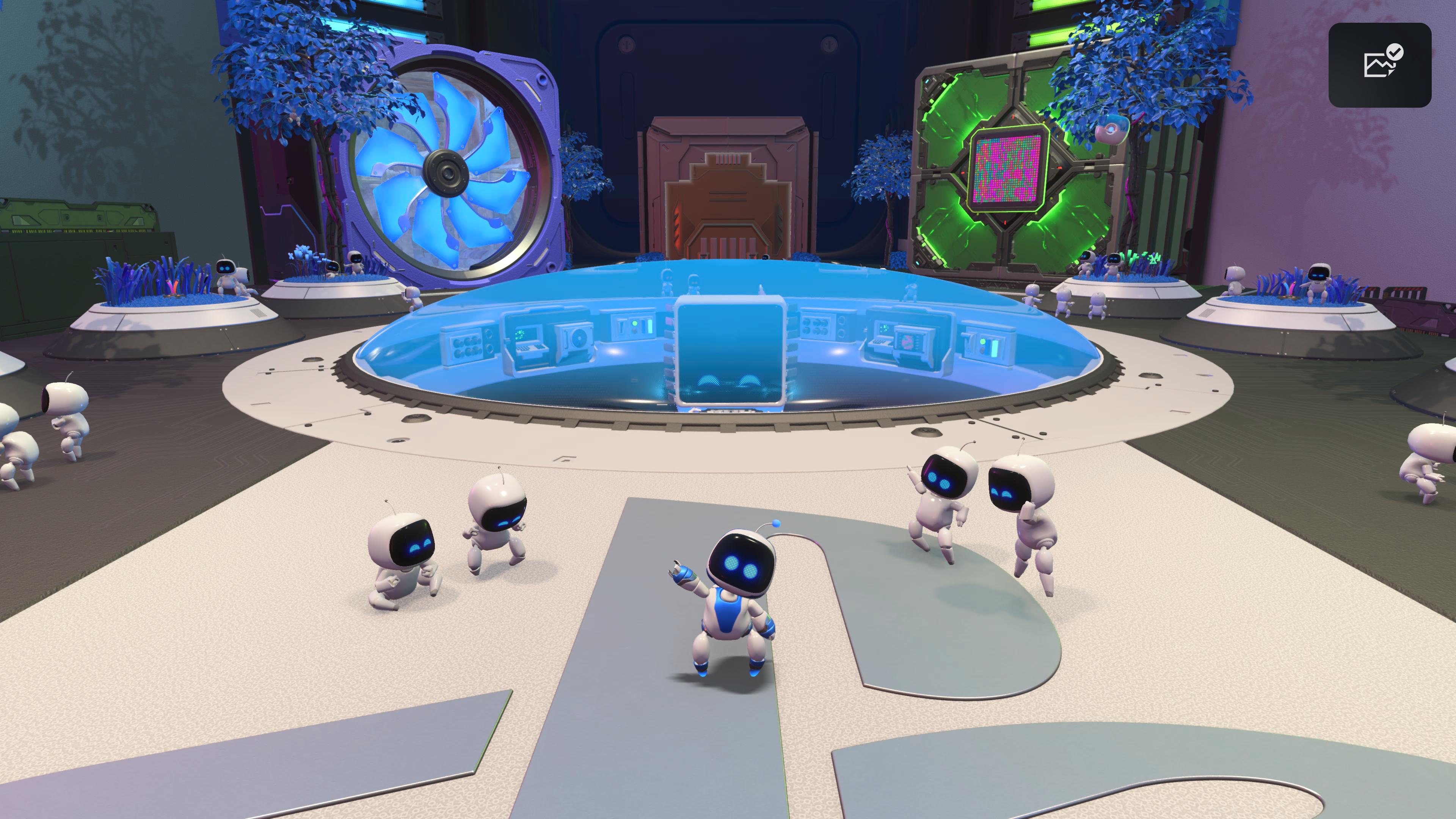
"Looking at the future, we think there is a lot more we can get out of this controller. In fact, we are dedicating a small team solely on exploring the controller"
Nicolas Doucet, Team Asobi
One studio that was introduced to DualSense early on was Team Asobi. Of the process, Doucet says "we were lucky to be part of the prototyping of DualSense since the very early days, getting our hands on controller prototypes and being the team to create demos and showing them back to the hardware engineers, which in turn could tweak the inner technology to best effect. By the time we got around to creating Astro's Playroom, we had lots of haptic expressions that we knew had potential to impress new players."
Speaking of games with the potential to impress, Returnal is another of the PS5 exclusives that turned some heads in 2021 with its innovative haptic feedback. Housemarque's narrative director Gregory Louden tells me that the studio was "struck by the DualSense prototype and the potential it had to create something new," adding, "we wanted to bring a new level of immersion, communication, and atmosphere through nuanced and textural haptics."
"For me, when DualSense is used well, it means players are more deeply in flow with the gameplay and story we are trying to tell. So this is why it has had such a massive impact. DualSense connects players to games in an even stronger and deeper way, and with Returnal we wanted to use it as tastefully and innovatively as we could," Louden continues. "We had to experiment, research and be bold to explore what was possible. Not everything worked but when it did we kept it and made it better."
Easy to implement
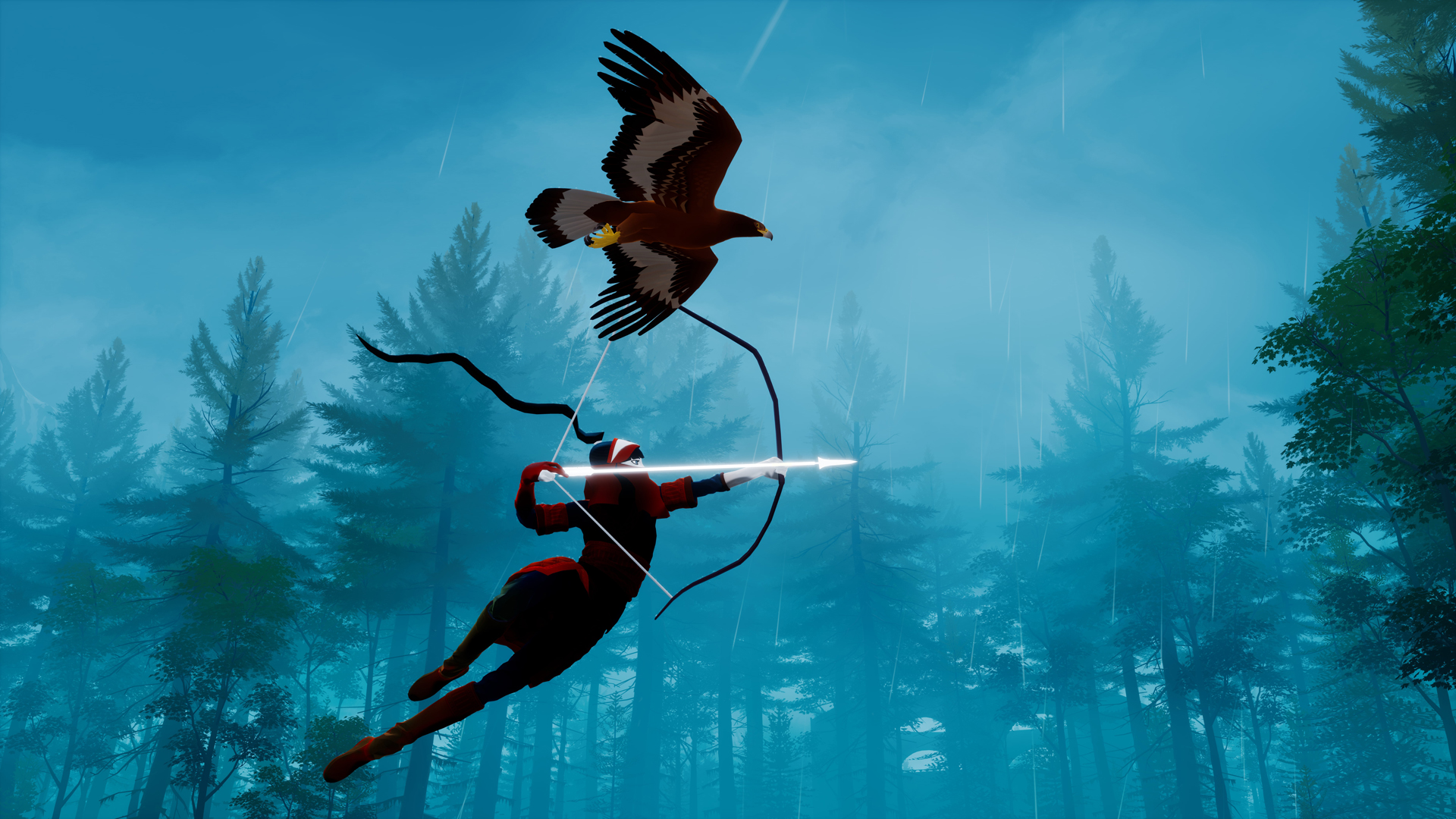
Anecdotally, many developers express a similar range of emotions with respect to the DualSense – initial hesitation through to eventual adulation. Matt Nava, creative director at Giant Squid, recalled a similar journey to Play: "Honestly, I was skeptical of the DualSense, wondering if it would be a significant addition. However, after tuning it up and playing The Pathless with it for a week, I realized that I missed the feedback it was providing when I went back to testing on a PS4 controller."
Karp expressed a similar sentiment while reflecting on the development of Dirt 5. "On hearing about the DualSense features, I was intrigued, but thought it was probably going to be a bit gimmicky. However, when I first got hands on with the tech demos I was really impressed by the feel and feedback." He explains that getting functionality up and running "wasn't a huge job, but the design and the iteration to make sure it feels right takes time, care, and attention."
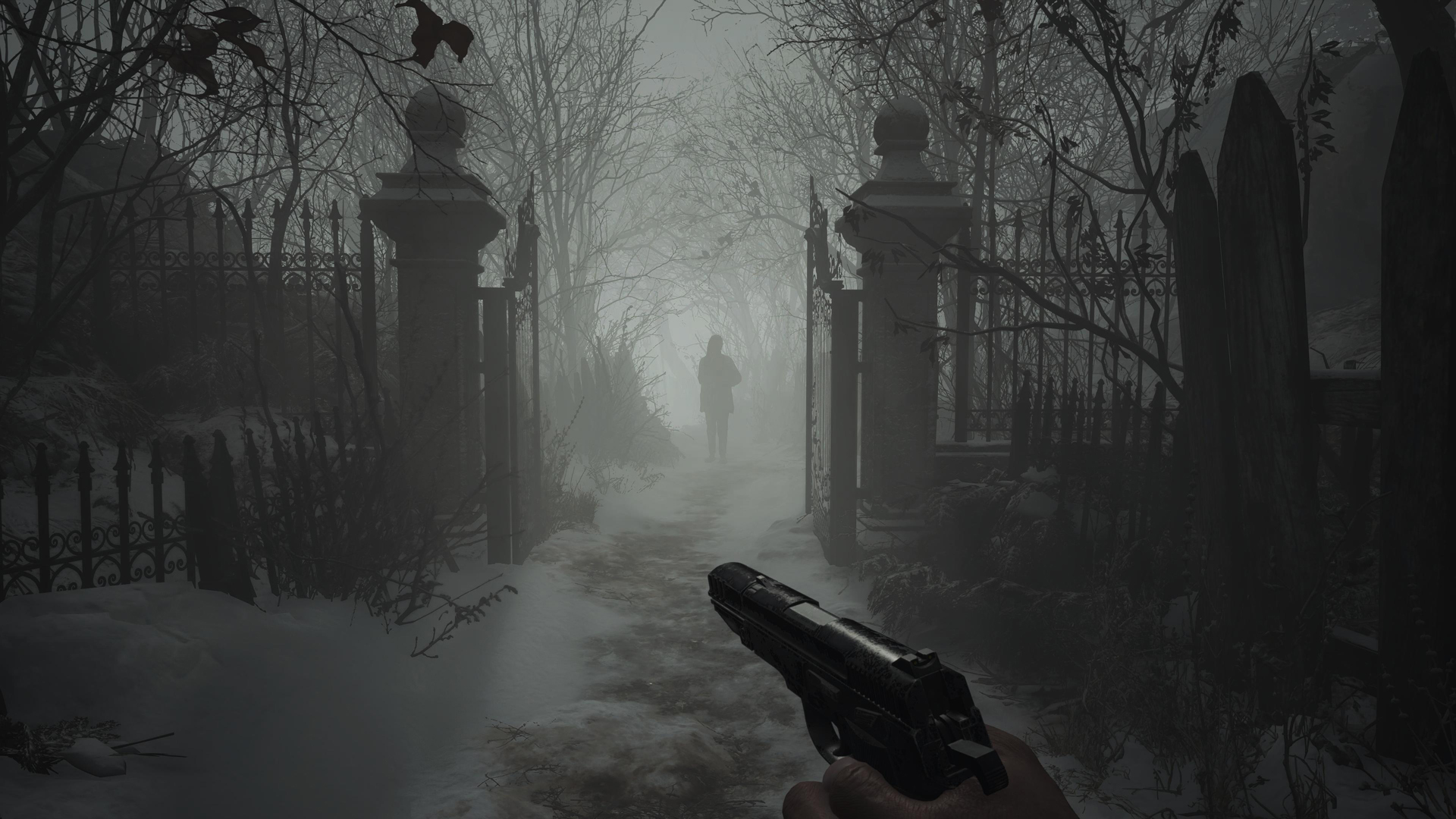
The importance of time and care was also expressed by Morimasa Sata, director of Resident Evil Village, who says that while "the PS5 expanded the possibilities of game development", the adaptive triggers did give his team pause. "Since the weight of the triggers would determine how shooting a gun felt, it was tricky deciding how much weight felt 'realistic'." As the end result shows, Capcom was able to further drag us into Ethan's European Nightmare by making the pervasive sense that every shot had to count into a physical sensation.
Thomas Puha, communications director at Remedy Entertainment, says that getting Control: Ultimate Edition working so superbly with the DualSense haptics and adaptive triggers required a deft touch, though the studio is eager to continue experimenting in the future. "We definitely like the DualSense. It's a real improvement over the [DualShock 4], and definitely offers a lot of opportunities for doing interesting things in future games."
The future of DualSense
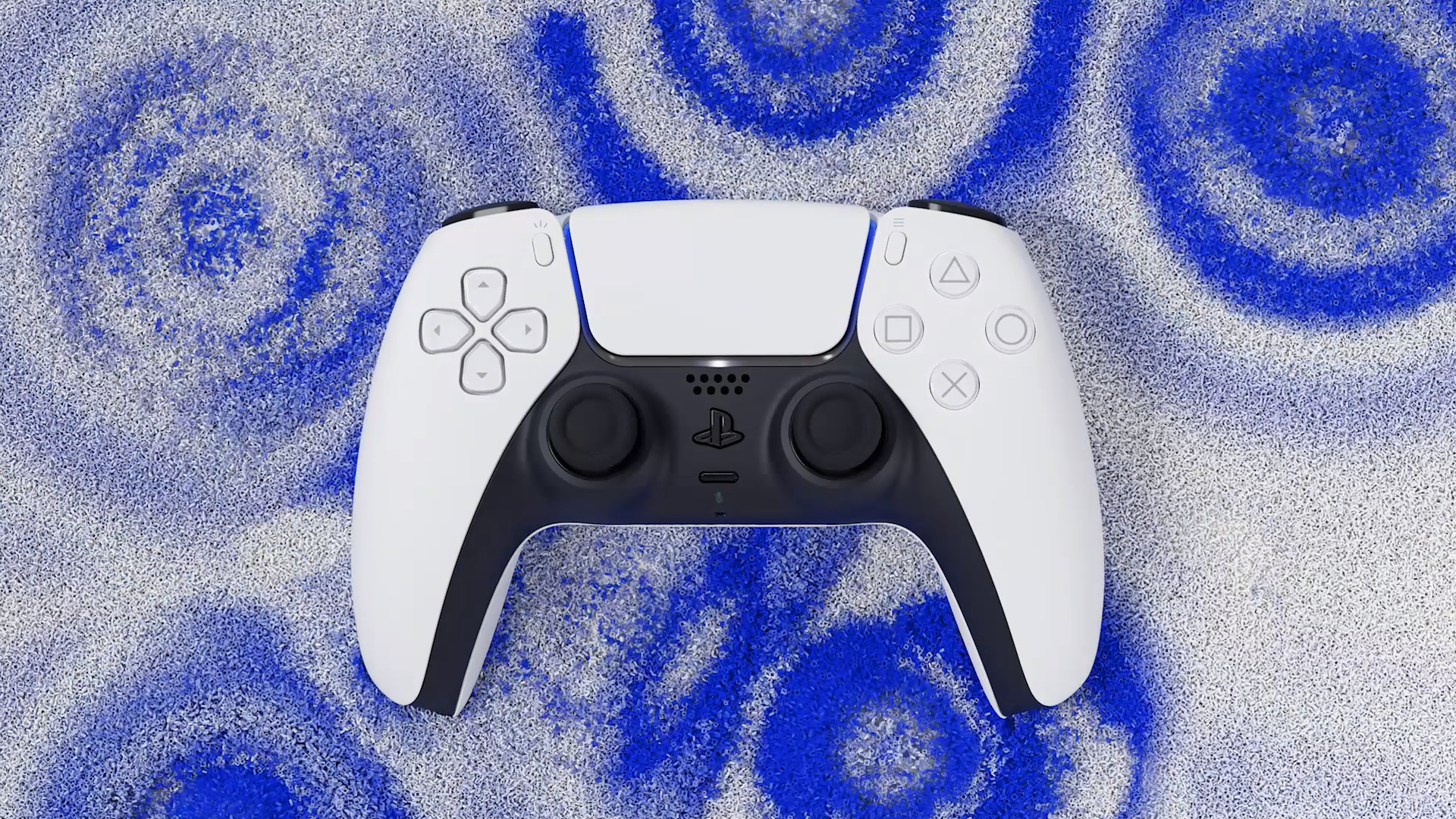
Where some studios have focused on fine-tuning, others have invested more heavily in haptics to ensure they are set for future exploration of the hardware. Back at Team Asobi headquarters, Doucet explains that the studio has restructured some departments because of the DualSense. "Since the haptic feedback is essentially sound-based, we brought our audio designers closer to the core gameplay and the entire team had to learn about the way this technology worked and how its potential could be harnessed. But once this was set, creating haptics just became an every-day process, like creating art, animation, sounds or gameplay interactions."
It's important to understand how developers are handling DualSense now, because it gives us some indication of what will come in the future. The second year of PS5 is set to contain some massive exclusives – God of War: Ragnarok, Gran Turismo 7, Horizon Forbidden West, and Tokyo Ghostwire, to name but a few – and we'll be looking to these studios to see how they are driving DualSense implementation forward and taking inspiration from the first wave of haptic architects.
As far as Doucet is concerned, the sensations afforded by DualSense's haptic feedback and adaptive triggers shouldn't be ignored by developers working on PS5 games. From his perspective, it offers something genuinely new – and that's to be celebrated. "There's a dimension of magic: the way a game 'feels' is a difficult notion to convey in words, actually. Everybody can feel it, but the fact you have to experience it for yourself adds a sense of fun mystery to the whole thing."
"Over the months of showing various prototypes of DualSense to other developers, I often heard comments such as 'how on earth does it work? How can it just feel so different? That's mind-boggling'. I believe what makes video games fascinating in their early days was exactly that, a feeling of mystery and magic, and it's brilliant to see we can still convey that exact feeling decades later."
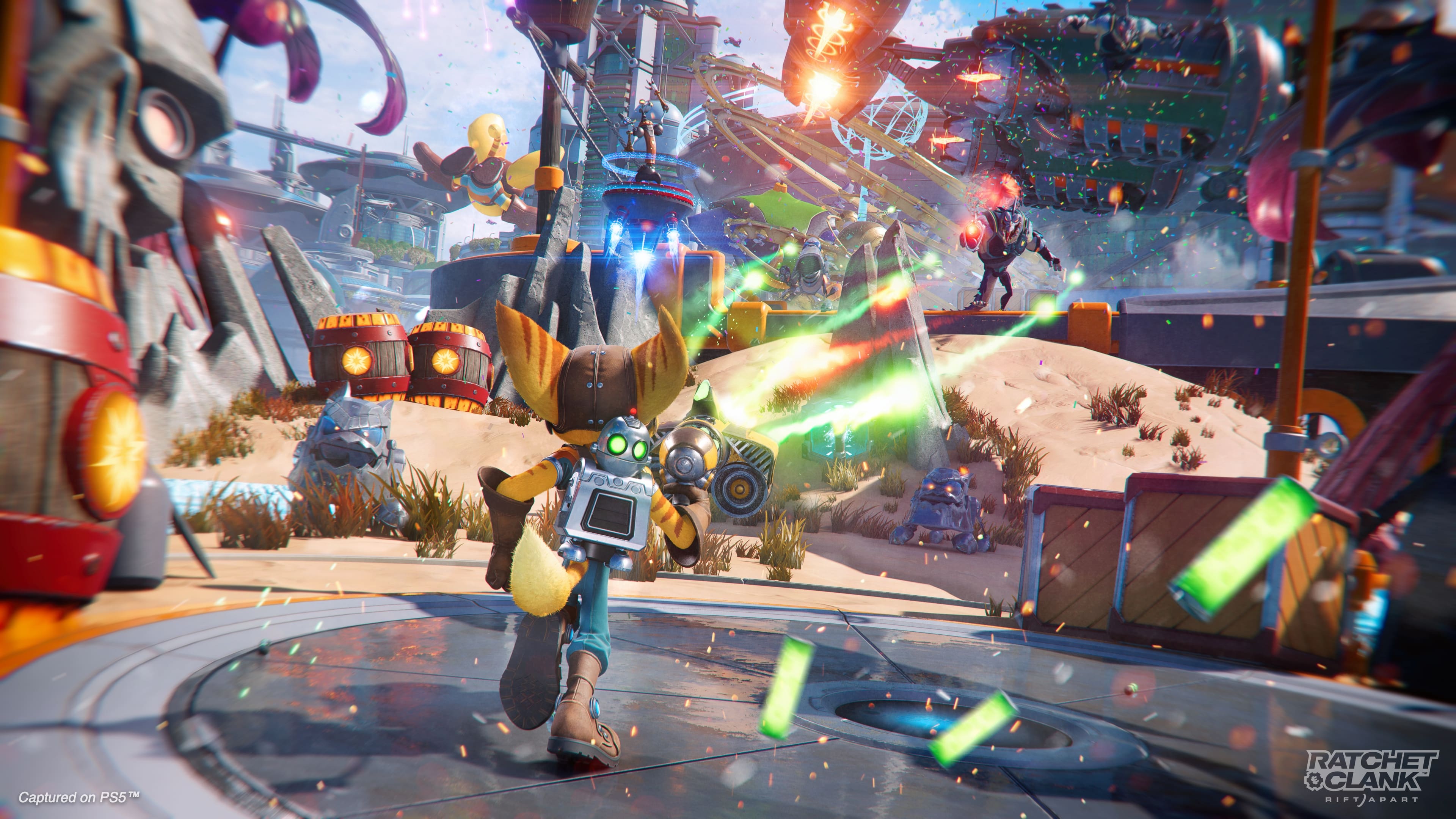
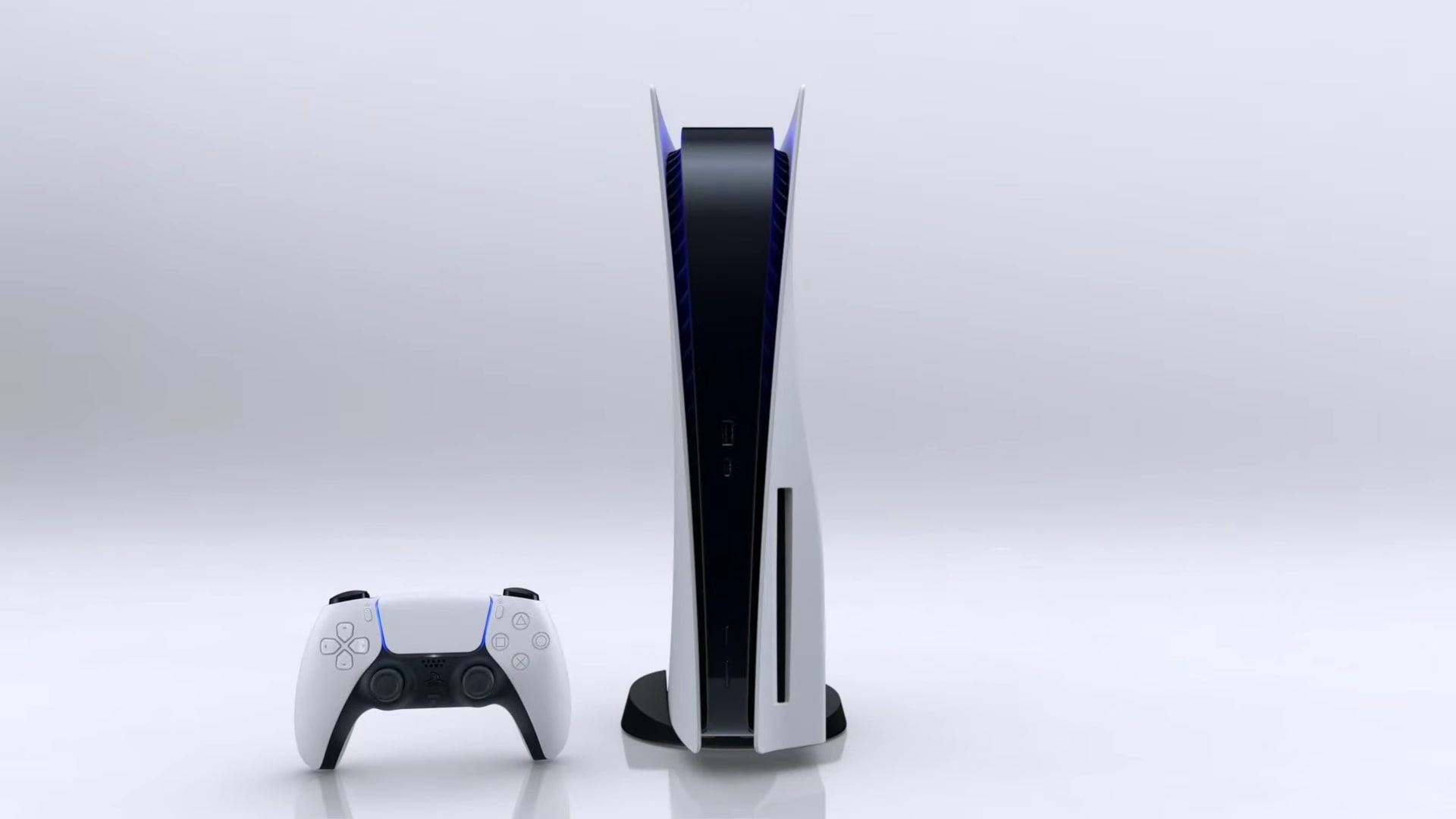
Great exclusives, supply issues, and exciting showcases – The 5 moments that defined the first year of PS5.
Insomniac's Mike Daly says that he's "still very proud of the DualSense implementation on Ratchet & Clank Rift Apart and think it's among the best haptics experiences I've tried to date, alongside Astro’s Playroom." Which is no surprise, given the way it let players switch weapon functionality through differing pressures placed on each adaptive trigger was phenomenal and, we hope, functionality other developers take advantage of in the future. "I think the industry is definitely only scratching the surface of haptics as we discover the most effective conventions, develop more advanced authoring tools, and acquire greater touch sensitivity as we play more PS5 games."
For Housemarque's Louden, he believes that "the potential of DualSense is massive and we were honoured to be some of the first to show what's possible. Returnal and our use of DualSense is just the start for us at Housemarque." Meanwhile, Team Asobi's Doucet says the studio is experimenting as it looks beyond Astro's Playroom: "Looking at the future, we think there is a lot more we can get out of this controller. In fact, we are dedicating a small team solely on exploring the controller. And some cool stuff already came out of this. I cannot say any more but we are looking forward to the day the player will be able to feel these!"
The DualSense has been the highlight of the PS5's first year, if not the entire new generation. With developers still only scratching the surface of what is possible with handheld haptic feedback and responsive adaptive triggers, there's a real feeling that the best is yet to come. So, what should you play right now if you want to see the best of DualSense? I'll leave the last word to SIE product director Toshi Aoki, because he has some recommendations of his own.
"Some of my favorite implementations from developers include Astro's Playroom, Marvel's Avengers, and Returnal. In Astro's Playroom, I especially liked feeling the rain, hail, and tornado in the game, as well as the different feelings from the ground like metal, sand, and water – it's just amazing. In Marvel's Avengers, you can feel all different types of characters using their superpowers or weapons – it matches the gameplay experience and it makes me feel like I am the superhero. And in Returnal, it feels like the DualSense controller disappears in your hands; feeling the subtle changes in the surrounding environment is just sensational. I'm looking forward to many more PS5 games that take the gameplay experience to the next level with the DualSense controller."
We've got a list of the best PS5 games released in the first year of the new-gen system. And if you're still trying to get your hands on a console, you might want to check out our PS5 restock updates.
Special thanks to our friends at Play magazine for the additional reporting. Play is the UK's best-selling video games magazine and an essential guide to PS5. Subscribe to Play magazine here and get new issues delivered straight to your doorstep or digital device.

Josh West is the Editor-in-Chief of GamesRadar+. He has over 15 years experience in online and print journalism, and holds a BA (Hons) in Journalism and Feature Writing. Prior to starting his current position, Josh has served as GR+'s Features Editor and Deputy Editor of games™ magazine, and has freelanced for numerous publications including 3D Artist, Edge magazine, iCreate, Metal Hammer, Play, Retro Gamer, and SFX. Additionally, he has appeared on the BBC and ITV to provide expert comment, written for Scholastic books, edited a book for Hachette, and worked as the Assistant Producer of the Future Games Show. In his spare time, Josh likes to play bass guitar and video games. Years ago, he was in a few movies and TV shows that you've definitely seen but will never be able to spot him in.


